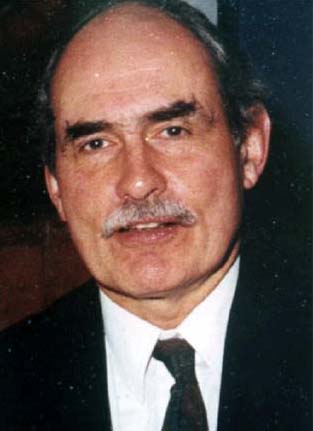
The First Round of voting in Peru's 2000 Presidential Elections by Peru RPCV David Scott Palmer
CONCLUSIONS FROM THE FIRST ROUND
by David Scott Palmer
I am just back from service in Peru as a member of the OAS Observer Mission between April 3 and 12. I was in Lima and Lambayeque. I participated in observing the preparations, the election process itself, and the computer entry of electoral table results following (throughout the Department of Lambayeque), as well as the government's and opposition's responses through Wednesday noon (in Lima on Tues?Wed). My initial observations on the elections are the following:
1. The vote itself was free and fair. There were many challenges and difficulties, from polling places opening up to two hours late, to political propaganda too close to polling places, to a few cut ballots (4 in all), to some defaced ballots (22 in all), to folks wandering in wearing their parties' T?shirts, to a bit of political propaganda left in a few voting booths, to far too many designated members (3 at each, with responsibility for all aspects of the voting process) of the individual voting tables (up to 200 voters assigned to each, for a total of over 80,000 nation?wide) who had not received adequate training and had difficulties in meeting their responsibilities. But people could and did vote massively, without interference or systematic partisan influence, and their votes were duly recorded, placed into sealed transparent envelopes, and distributed to the Office of Electoral Processing, the Armed Forces, the National Electoral Tribunal, and every political party representative present at each table (up to 10, though in the 300 or so that I personally visited, there were never more than five, and as few as one).
Conclusion: In my judgment, any statement that the vote itself was fraudulent is irresponsible. The problem, as I view it, is that politics in Peru has become very polarized over recent weeks, with the media on both sides (opposition and official) making all sorts of unwarranted extrapolations. Politicians themselves, including Toledo, have also made some statements about the vote and the voting process that in my judgment are not warranted on the basis of what actually happened.
2. There was a real problem, however, was in the computerized processing of the results rather than the vote itself. It appears to me, as it did to the OAS and other international observers, that the government was preparing to doctor the results, given how close their candidate was to the 50% threshold, just enough to push him over the first round victory threshold. Both the OAS and Transparencia quick counts, which were based on real results from a properly representative sample of about 300 election tables, showed that Fujimori would fall short of the 50% mark. When the results of 55% of the vote were presented at 1 PM on Tuesday showing Fujimori at 49.96% of the vote, these organizations, the European Community, and the U.S. govt, all made very high profile statements making clear that they would not accept a result as valid if it gave Fujimori a first round victory. Combined with the massive and largely spontaneous gathering of tens of thousands of Toledo supporters in downtown Lima, and Toledo's remarkable press conference making clear that he would not recognize the results if they did not show that there would be a second round, I believe that the government backed off from its original plan.
Conclusion: International pressure at exactly the right moment worked. Toledo's responsible statesmanship at that same juncture also contributed.
3. The larger problem remains, which is the tilted electoral playing field that systematically favors the government, and which was prepared over a five year period. When combined with a TV media that is largely government controlled (and which did not even cover the Toledo press conference or the spontaneous gathering and peaceful marching all of Tuesday PM and evening!), Fujimori retains a considerable advantage. Some steps will have to be taken to level things as much as possible for the second round.
Conclusion: The government has the advantage for the second round. Toledo and the international community have to keep up the pressure.
4. However inappropriately and illegally the government has proceeded in the pre?electoral process, the fact remains that Fujimori does have large scale support, based on real accomplishments and not just on the "handouts" the opposition claims gains him much of the citizens' vote. Toledo will have to work very hard to win in the second round even with a more open media and a more level playing field. Some of his approaches are brilliant, but others slip into demagoguery. He will have to retain the former and eliminate the latter to be able to wrest the presidency from Fujimori in the runoff (June 4 or 11).
